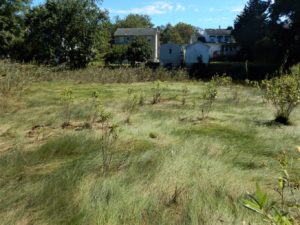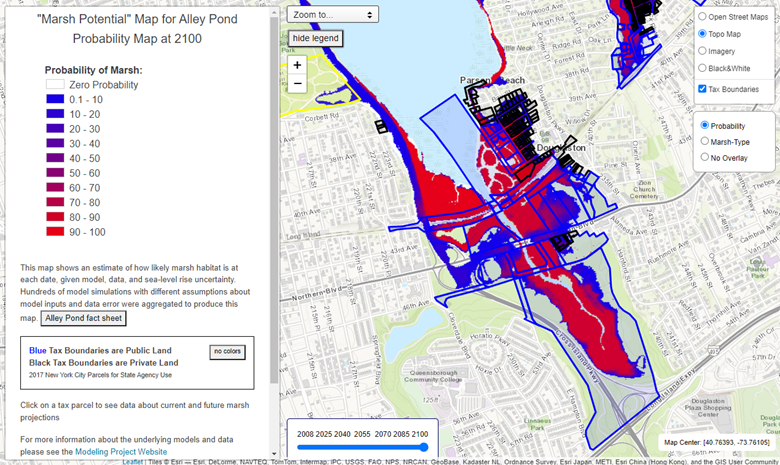
A new online interactive viewer is aiding in coastal resiliency planning in New York by showing potential marsh migration areas in the Long Island Sound. The “Marsh-Fate Interactive Viewer” is the result of a three-year assessment by the New York State Department of Environmental Conservation and the Long Island Sound Study (LISS) in partnership with NEIWPCC. The project supports the LISS Comprehensive Conservation and Management Plan goals.
“To assist Long Island Sound communities and conservation groups in New York with planning for marsh migration and coastal resiliency we developed an easy-to-use viewer that uses the results of the Sea Level Affecting Marshes Model (SLAMM),” said Victoria O’Neill, NEIWPCC environmental analyst and LISS habitat restoration and stewardship coordinator. “It depicts marsh migration over time on a parcel-by-parcel basis, under various sea level rise scenarios.” This mathematical model uses digital elevation data and other information to stimulate potential impacts of long-term sea level rise on wetlands and shorelines.
The online interactive viewer, created by Warren Pinnacle Consulting, also overlays land tax-parcel and ecosystem information to assist conservation groups in defining and evaluating land-management opportunities. Regional workshops with partners and municipalities provided training on how to use the viewer and an opportunity to discuss conservation priorities. Using this community input, two sites were selected for the development of marsh migration conservation plans. The reports estimate the marsh’s conservation value, taking into account unique habitat types; conservation, easement and purchase of adjoining lands; and potential barriers to and opportunities for advancing marsh migration.

“Ultimately,” said O’Neill, “These tools allow stakeholders to make informed decisions on habitat restoration and land conservation for their communities.”
Building on the key learnings and community interest in the project, Phase 2 will launch in January 2022 following a similar project plan.
“It’s always great to see stakeholder interest and utility in a project, and we are fortunate to be able to support a second phase of this work to add all Long Island Sound marshes to the viewer,” said Richard Friesner, NEIWPCC director of water quality programs.
During this next assessment, approximately 50 additional marsh sites in New York will be analyzed and added to the online viewer, with one to three conservation plans completed. This effort corresponds with work underway through an EPA study on coastal Connecticut marshes, through the Connecticut Department of Energy and Environmental Protection. After both projects are complete, all interested coastal communities in the Long Island Sound will have received support to develop marsh projections on the viewer, providing insights for local coastal resilience planning efforts.